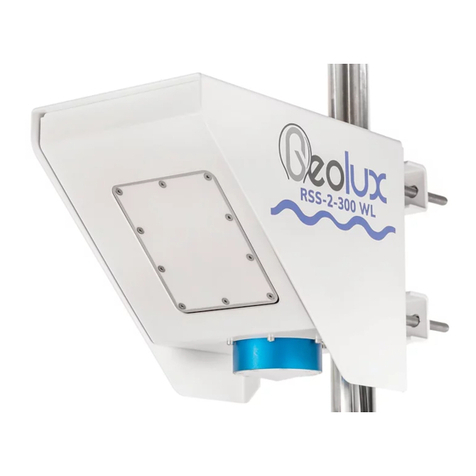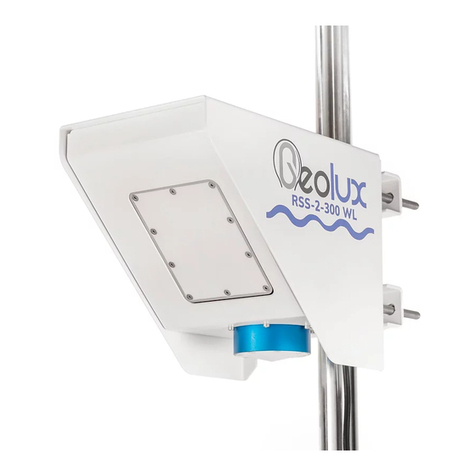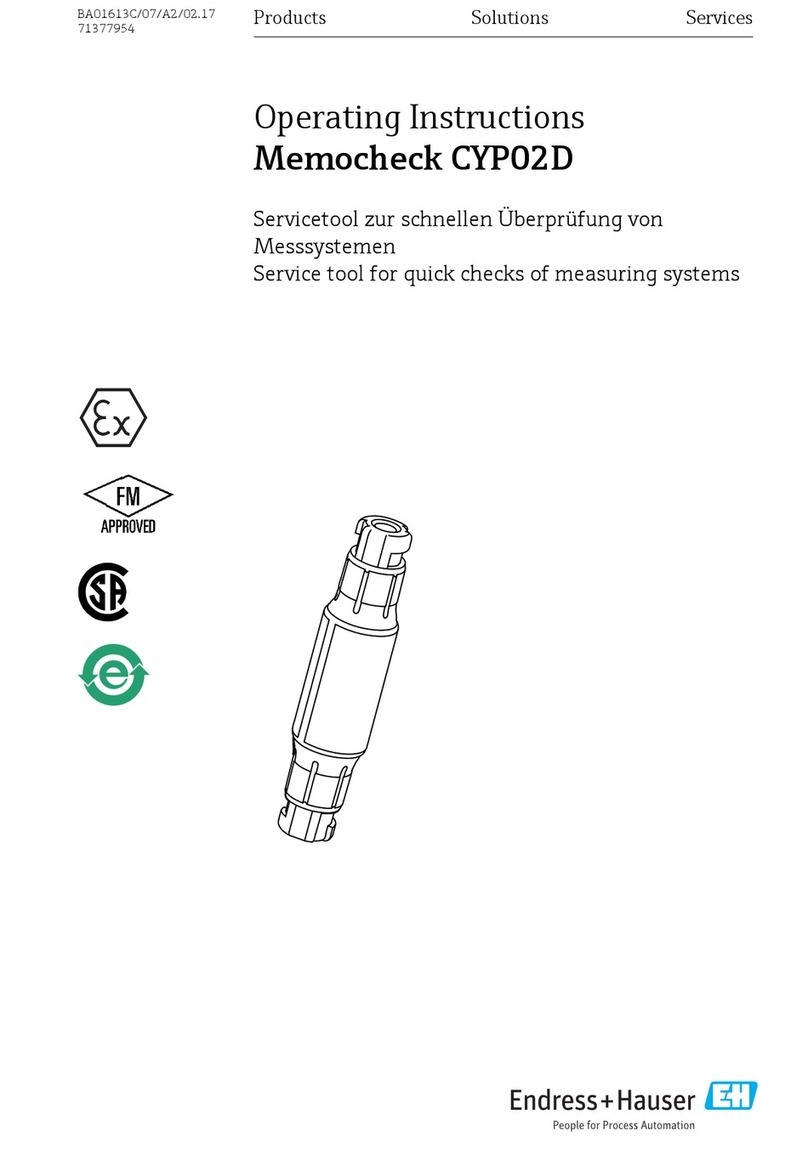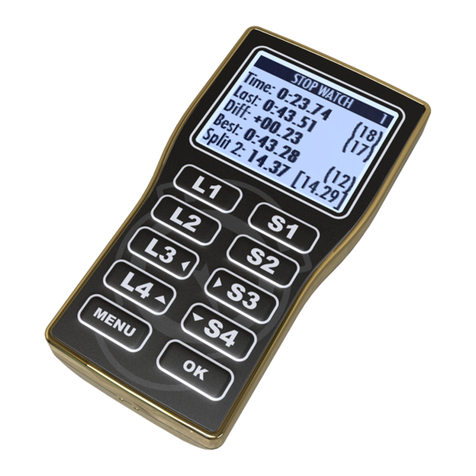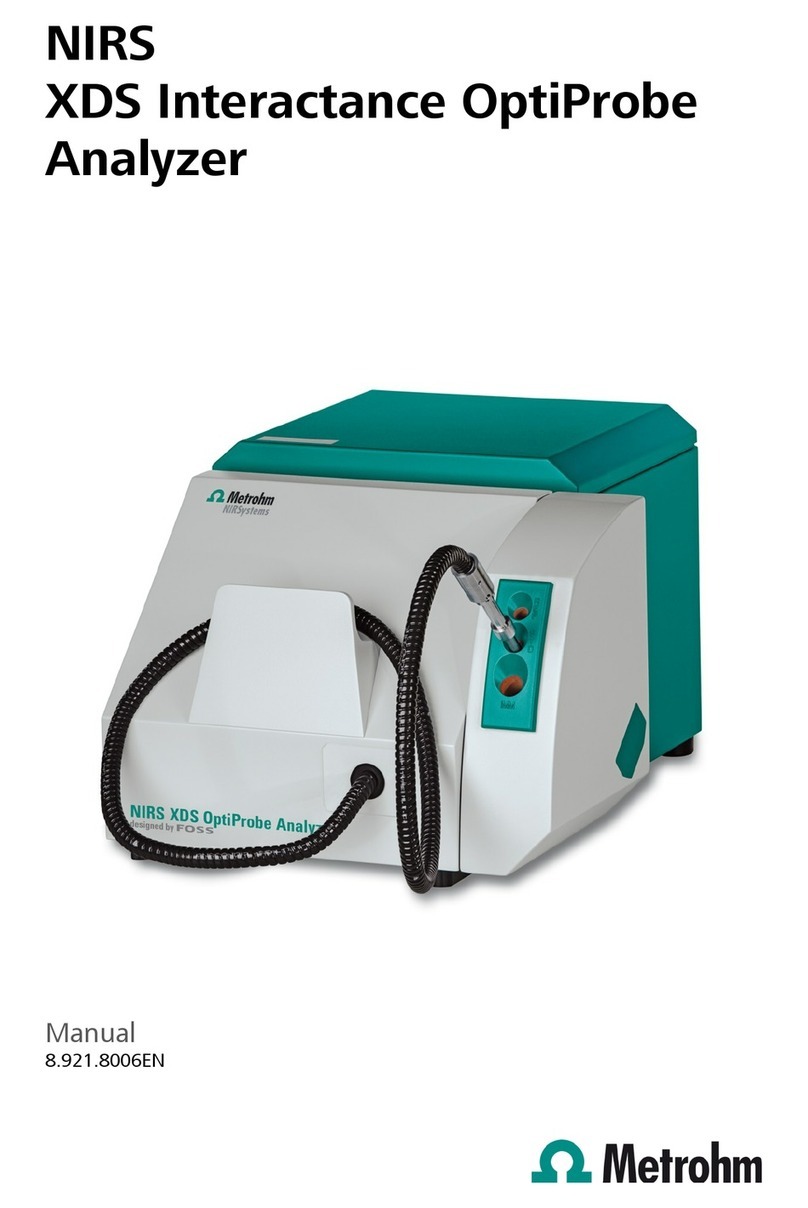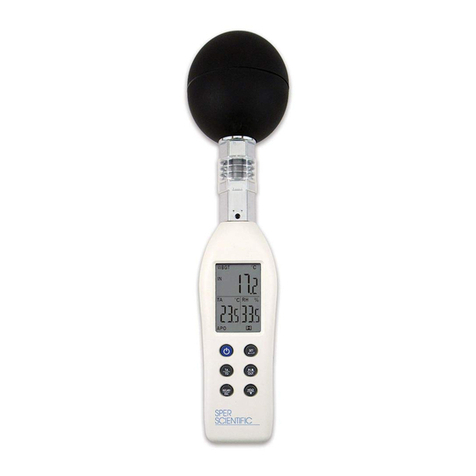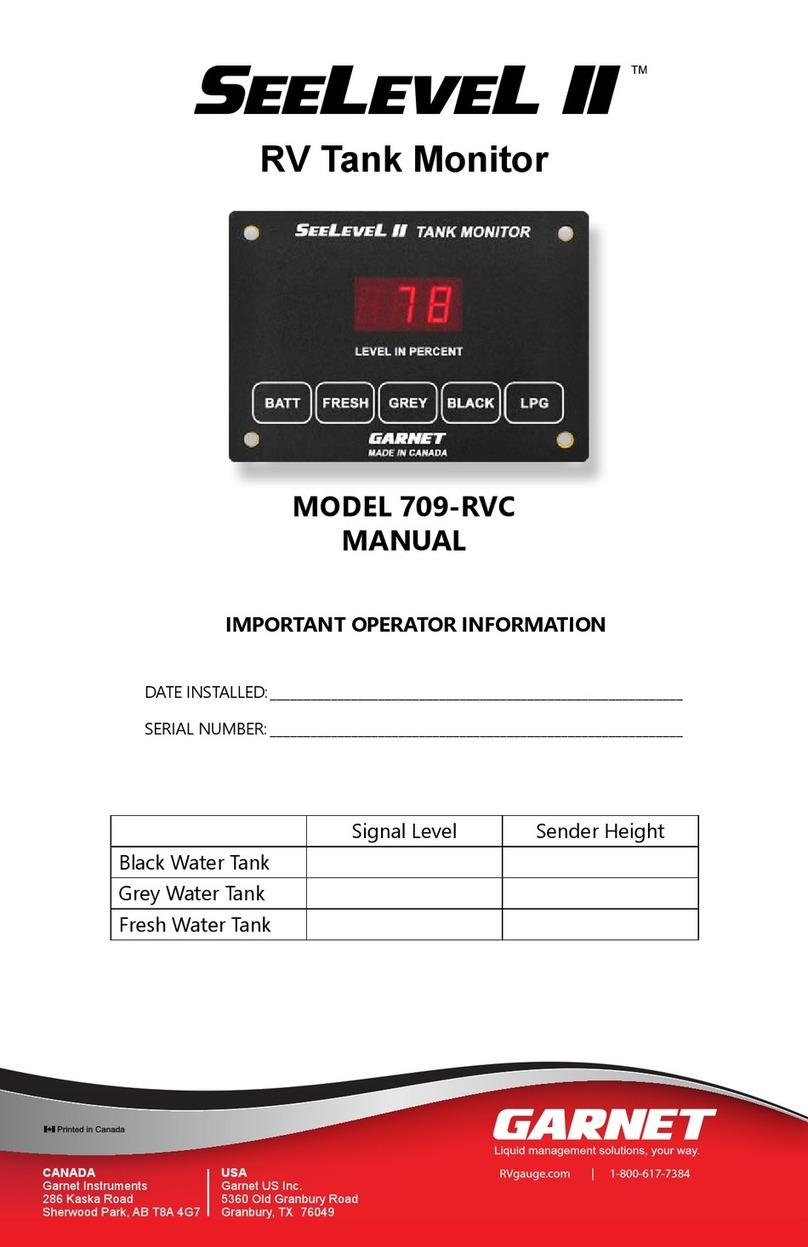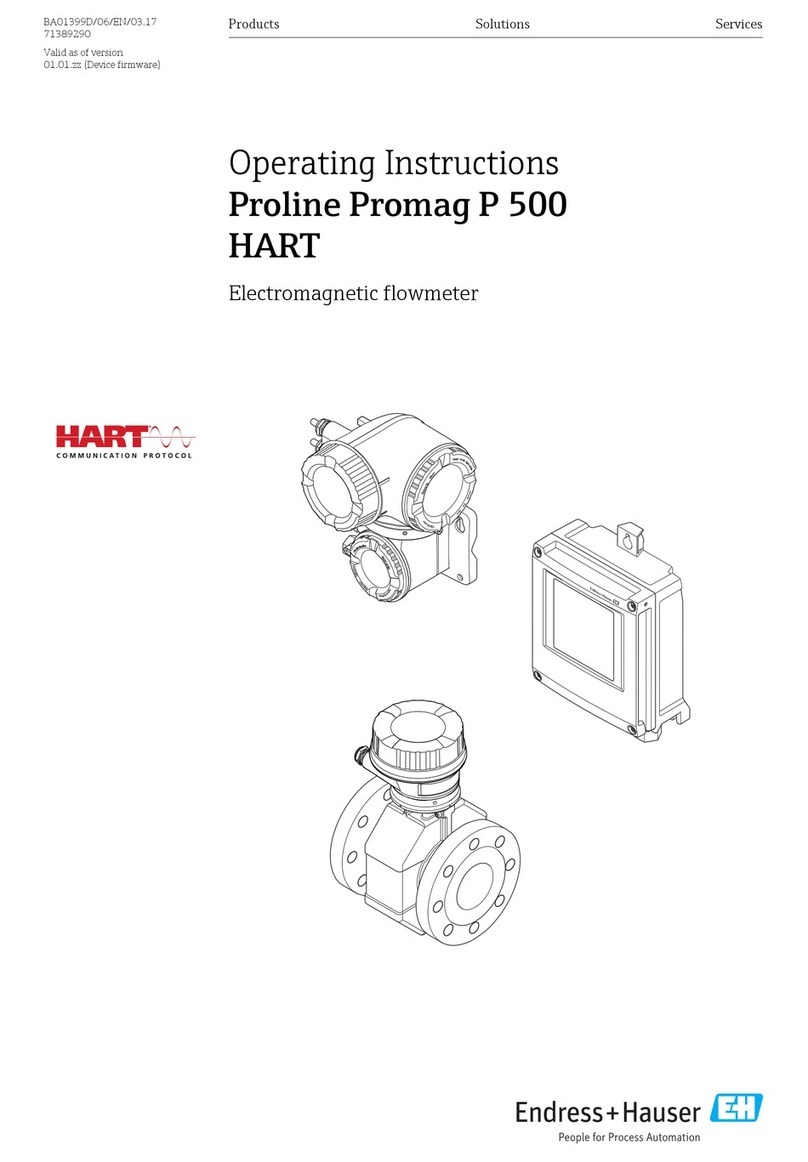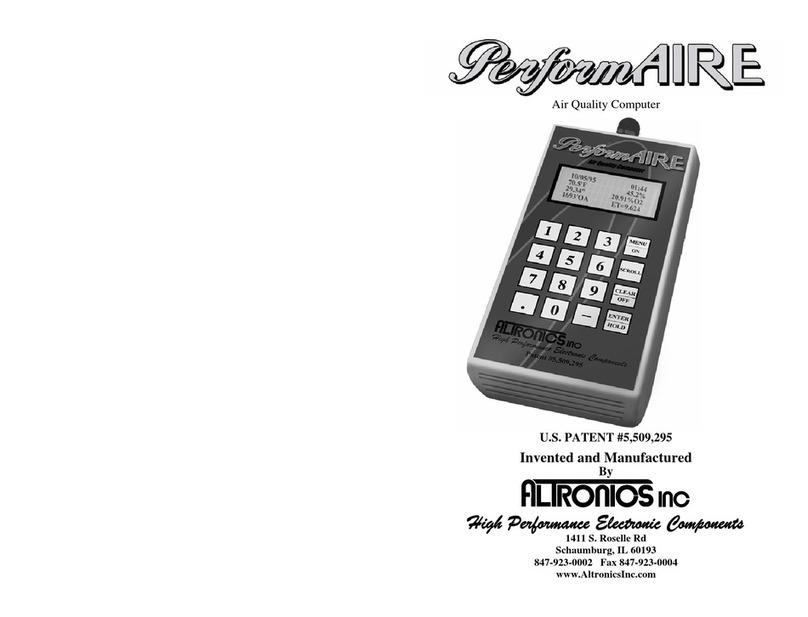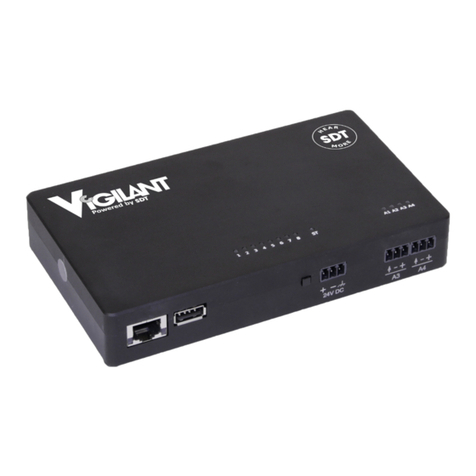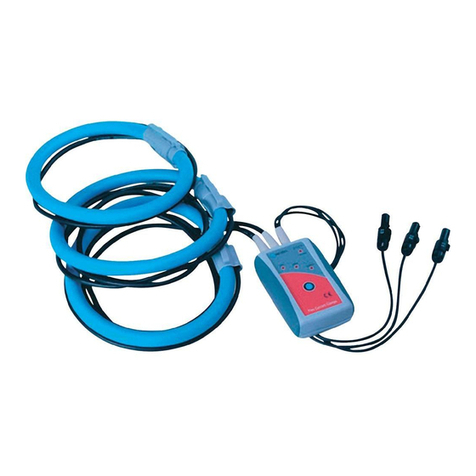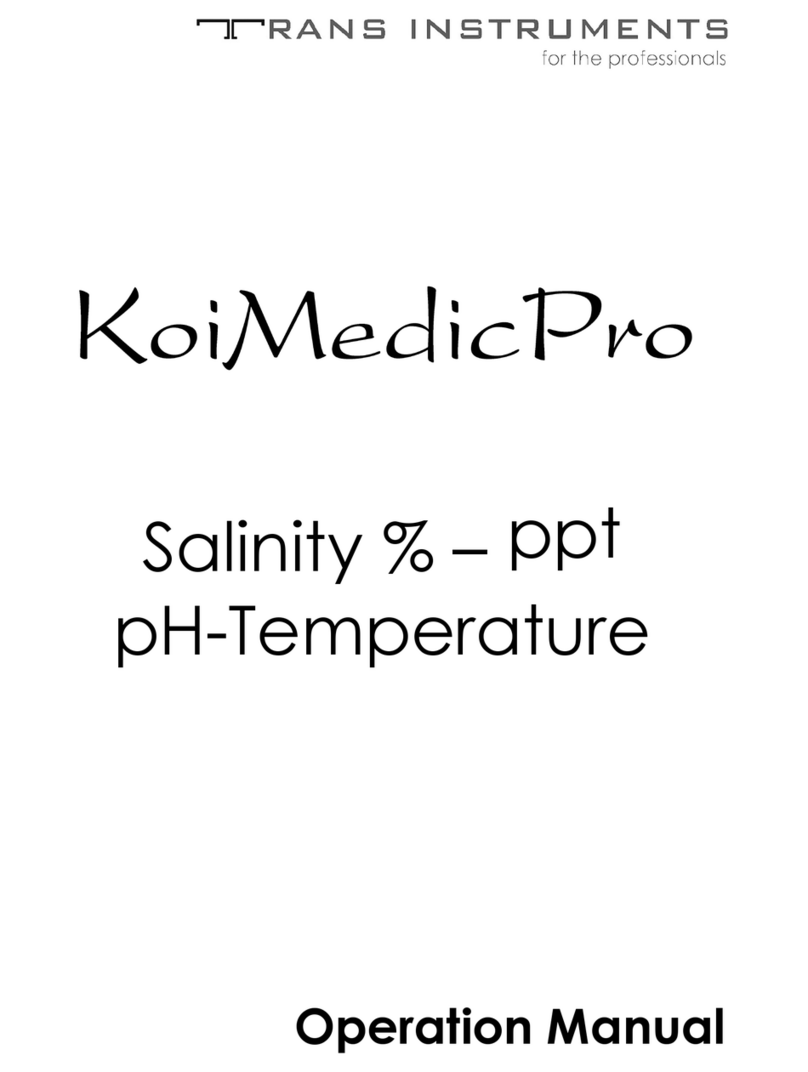Geolux GLX-RSS-2-300 WL User manual

Copyright ©2022 Geolux d.o.o. All rights reserved.
GLX-RSS-2-300 WL
Non-Contact Flow Meter
User Manual
v6.4.8

Starting Point
Thank you for purchasing Geolux RSS-2-300 WL non-contact open channel ow meter! We
have put together the experience of our engineers, the domain knowledge of our customers, the
enthusiasm of our team, and the manufacturing excellence to deliver this product to you.
You may freely rely on our eld-proven radar technology. The use of top-quality components and
advanced signal processing algorithms ensures that Geolux level meter can be used in various
applications and environments.
We have created this User Manual to assist you in setting up and using the Geolux instrument.
Should there be any questions left unanswered, please feel free to contact us directly:
Geolux d.o.o.
Ljudevita Gaja 62
10430 Samobor
Croatia
E-mail: [email protected]
Web: www.geolux.hr

Contents
1. Introduction 1
2. Electrical Characteristics 2
3. Cable Pin-Out 3
3.1. Serial RS-232 Interface 4
3.2. Serial RS-485 Interface 4
3.4. Analog 4 – 20 mA Output 5
3.5. SDI-12 Interface 6
4. Installing the Flow Meter 7
4.1. Instrument Mounting and Location Selection 7
4.2. Measurement Quality Indicator 9
4.3. Rain and Wind 10
4.4. Interference and Multiple Radars 10
4.5. Fogging and Evaporation 11
4.6. Reections 11
5. Radar Settings 13
6. Data Interface 24
6.1. Serial RS-232 Interface 24
6.2. Serial RS-485 Interface 24
7. Data Protocols 25
7.1. NMEA Protocol (RS-232) 25
7.2. Servicing Protocol (RS-232) 28
7.3. Request-Response Protocol (RS-485) 36
7.4. HS Protocol 36
7.5. Modbus Protocol (RS-485) 37
7.6. SDI-12 43
8. Radar Congurator Utility 47
8.1. Conguring the Unit for Discharge Calculation 51
8.1.1. Dening the Channel Prole Geometry Manually 52
8.1.2. Selecting a Predened Channel Prole Shape 55
9. Calculating Discharge from Surface Velocity and Liquid Level 59
10. Troubleshooting 61
11. Appendix A – Mechanical Assembly 67

GLX-RSS-2-300 WL User Manual
1
GLX-RSS-2-300 WL Non-Contact Flow Meter
1
Introduction
Geolux RSS-2-300 WL ow meter uses radar technology to provide precise contactless
measurement of surface ow velocity and precise distance (level) measurement from the sensor to
the water surface. Fully contactless radar technology enables quick and simple sensor installation
above the water surface and requires minimum maintenance.
Surface velocity measurement functionality is achieved by transmitting an electromagnetic wave
in 24 GHz frequency range (K-band) and measuring the frequency shift of the electromagnetic
wave reected from the owing water surface. The frequency shift is caused by the Doppler effect
of the moving surface on the electromagnetic wave. As the relative speed between the radar
sensor and the water surface increases, the detected frequency shift also increases, thus enabling
the ow meter to precisely determine the surface velocity.
Water level is measured by measuring the distance from the sensor to the water surface, which
is proportional to the frequency difference between the transmitted and the received signal. The
radar periodically transmits a linear chirp ranging in frequency from 77 GHz to 81 GHz. As the
distance between the radar and the water surface increases, so does the difference between the
transmitted and received frequency, enabling the level meter to precisely determine the distance
between the sensor and the water surface. The radio signal modulation and detection algorithms
used in the sensor allow very precise measurements that are not dependent on air temperature,
humidity, or other parameters of the environment.
The ow meter is able to detect water surface velocity ranging from 0.02 m/s to 15.0 m/s with
precision of 0.001 m/s while the distance can be measured in range from 0.2 m to 15 m or 30
m with resolution of 0.5 mm and accuracy of ±2 mm. An integrated tilt sensor measures the
inclination angle of the sensors and the surface velocity measurement is automatically cosine-
corrected according to the measured mounting tilt angle.
The ow meter is able to measure water ow at distances ranging from 0.2 m up to either 15 m or
30 m, depending on the device version: WL-15-1 is the 15 m version of the device, and WL-30-1 is
the 30 m version.
Calculation of the ow (discharge) is done internally in the sensor combining surface velocity
measurement and level measurement with congured cross section of the river or channel.
Conguration of the measurement parameters like channel prole cross section, material of
the edges and the location of the sensor above the water can be easily set using Geolux PC
conguration application - Geolux Instrument Congurator. When parameters are set properly,
the sensor will calculate ow with an accuracy of approximately ±1% compared to ADCP
measurement for the same location. Measurements of the surface velocity and water level will also
be available in parallel to the ow readings on the sensor digital communication interfaces.

GLX-RSS-2-300 WL User Manual
2
GLX-RSS-2-300 WL Non-Contact Flow Meter
2
Electrical Characteristics
The electrical characteristics of the Geolux RSS-2-300 WL ow meter are given in Table 1.
Table 1. Electrical Characteristics
Parameter MIN TYP MAX Unit
Communication interface:
RS-232 interface speed
RS-485 interface speed
1200
1200
115200
115200
bps
bps
Radar Velocity Sensor
Frequency
Radiated power (EIRP)
Sensitivity
Beam-width (3dB) – Azimuth
Beam-width (3dB) – Elevation
Measurement range
Resolution
Accuracy
Installation height above the water
24.075
-108
0.02
0.001
24.125
-110
12
24
1
24.175
20
-112
15.0
15
GHz
dBm
dBm
°
°
m/s
m/s
%
m
Radar Level Sensor
Frequency
Beam-width (3dB) – Azimuth
Beam-width (3dB) – Elevation
Resolution
Accuracy
Minimal distance
Maximal distance
77.000
0.5
0.2
5 (±2.5)
5 (±2.5)
2
81.000
15/30
GHz
°
°
mm
mm
m
m
Power supply voltage 9.0 12.0 27.0 V
Power
Operational mode
Sleep mode
1550
85
mW
mW
Alarm Output Maximal Current 60 mA
Alarm Output Maximal Voltage 30 VDC
Analog Output Maximal Voltage 30 VDC
Operational Temperature Range -40 +85 °C
Angle Compensation 0 30 75 deg.
Installation Height Above the Water 0.2 15/30 m
Sample rate
Level and Discharge
Velocity
1
10
sps
sps
Ingress Protection Rating IP68
Mechanical 150x200x250 mm

GLX-RSS-2-300 WL User Manual
3
GLX-RSS-2-300 WL Non-Contact Flow Meter
3
Cable Pin-Out
The ow meter is supplied with open end cable consisting of 12 wires coded with colours. Table 2
gives a detailed description for each wire.
It is possible to mount optional connectors on the cable end per user request. In this case, the
connector specication and connection diagram must be specied when ordering the sensor.
Table 2. Cable Pin-Out
Pin No. Wire Color Pin Name Pin Description
1White GND This pin should be connected to the ground (neg-
ative) pole of the power supply.
2Brown +Vin The power supply for the Radar Speed Sensor is
provided on this pin. The Radar Speed Sensor pow-
er supply voltage must be in the range 9 VDC to 27
VDC, and the power supply must be able to provide
at last 0.65W
3 Green RS232 – TxD RS-232 data transmit signal.
4 Yellow RS232 – RxD RS-232 data receive signal.
5Grey GND Signal ground.
6 Pink CAN – H CAN2.0B high signal. (optional)
7Blue CAN – L CAN2.0B low signal. (optional)
8Red SDI12 DATA SDI12 data line
9 Orange RS485 – D- RS-485 data transmitter/receiver low signal.
10 Dark Red RS485 – D+ RS-485 data transmitter/receiver high signal.
11 Black Alarm SW or 4–20 mA
Secondary (Optional)
Alarm 1 - open collector switch signal max.
60mA
12 Purple 4 – 20 mA Sink for 4 – 20 mA analog interface. Connect
sensing device as pull-up to sink the current

GLX-RSS-2-300 WL User Manual
4
GLX-RSS-2-300 WL Non-Contact Flow Meter
3.1. Serial RS-232 Interface
Serial RS-232 interface is implemented as standard PC full-duplex serial interface with voltage
levels adequate for direct connection to PC computer or other embedded devices used for serial
RS-232 communication.
In case the RS-232 interface is connected to standard DB-9 PC connector, TxD line (green wire)
is connected to pin 2 and RxD (yellow wire) is connected to pin 3. For proper operation of the
serial interface, additional connection of signal GND (grey wire) is required on pin 5 of the DB-9
connector.
Optionally Geolux can supply a cable with a DB-9 connector connected to the cable, but this must
be specied when ordering the sensors.
Several communication protocols are available, as well as custom ones on request. Details of
communication protocols are described in chapter 7 of this user manual.
Picture 1. Serial RS232 DB-9 Cable
3.2. Serial RS-485 Interface
Serial RS-485 interface is implemented as standard industrial half-duplex communication
interface. Communication interface is internally protected from short-circuiting and overvoltage.
Depending on the receiving device, the interface can be used with only two wires (D+ dark red
wire & D- orange wire) while in some cases ground connection (signal GND gray wire) is also
required. For more details, please consult receiver specication.
The most common communication protocol used with RS-485 interface is Modbus-RTU but other
protocols are also available. Details of communication protocols are described in chapter 7 of this
user manual.

GLX-RSS-2-300 WL User Manual
5
GLX-RSS-2-300 WL Non-Contact Flow Meter
3.3. CAN Communication Interface (Optional)
CAN communication interface is an optional communication interface that can be used for
special applications. This interface is a higher speed interface (up to 1 Mbps) than other serial
communication interfaces, thus enabling additional data transfer which would otherwise not be
possible with RS-232 and RS-485 interfaces.
CAN interface is disabled in the default sensor version - for additional features using CAN
interface please contact technical support.
3.4. Analog 4 – 20 mA Output
Analog current 4 – 20 mA output is provided for easier compatibility with older logging and control
systems. Output is implemented as current sink architecture with common ground. Maximal
voltage applied to the sink can go up to 30 VDC, providing greater exibility in connections of the
sensor to PLCs, loggers, or data concentrators.
Signal range and function for 4 – 20 mA analog output can be congured in the setup application
so the sensor will be able to signal the best suitable value range with available current range.
Current step in the sensor is 0.3 µA, which limits the resolution, so care has to be taken while
setting the minimal value to be represented by 4 mA and the maximal value to be represented by
20 mA so the resolution is sufcient for the system requirements.
Picture 2. Analog 4 – 20 mA Output Internal Architecture
Measurement of the current by the client device (logger, PLC, modem etc.) must be implemented as
the high side current measurement as shown in Picture 3. If a sensing resistor is used, resistance
should be selected from the range of 10 Ω up to 500 Ω with a recommended value of 100 Ω for the
sensing resistor.

GLX-RSS-2-300 WL User Manual
6
GLX-RSS-2-300 WL Non-Contact Flow Meter
Picture 3. High Side Current Measurement for the 4 – 20 mA Analog Output
3.5. SDI-12 Interface
SDI-12 interface is widely used to connect hydrological equipment to dataloggers. SDI-12 uses
a single communication line, and very slow speed communication to enable the use of very long
communication cables.
For hydrological applications, SDI-12 communication interface is a valid option and the instrument
is natively able to communicate directly with SDI-12 master devices (dataloggers etc.).

GLX-RSS-2-300 WL User Manual
7
GLX-RSS-2-300 WL Non-Contact Flow Meter
4
Installing the Flow Meter
The ow meter must be installed above the water surface, pointing toward the water surface at a
vertical angle. The minimum height above the water surface is 0.2 metres and it is recommended to
mount the sensor 0.5 metres above the water or higher, with a maximum height up to 15 or 30 metres,
depending on the device version. The instrument should be mounted on the vertical pole with inclination
tolerance of ±3° to vertical plane reference.
Picture 4 shows how the radar should be positioned relative to the water surface.
Picture 4. Installing the Flow Meter
When mounting the instrument, special care must be taken to ensure that a direct line to the water
surface is available and not obstructed for both the surface velocity and water level sensor. Any close
objects in the vicinity of the sensor can reduce accuracy and introduce offsets in measurements. The
best practice is to have a zone of 1 metre around both sensors clear of any other objects or structures.
4.1. Instrument Mounting and Location Selection
To achieve the specied accuracy, it is important to properly select the measurement site and to install the
sensor with proper horizontal and vertical tilt angle. For optimal operation and best results, the instrument
should be oriented in parallel with the water ow direction. Any deviation from parallel water ow direction
will introduce offsets of the real measurement value, more precisely the value will be lower than the actual
surface velocity of the water. It is recommended that the instrument is pointed upstream, so that the water
ows towards the instrument.
The height of the instrument above the water surface and the inclination determine the area on the surface
that is covered by the radar beam. This measurement area should be clear of any obstacles. The structure
holding the instrument (pole, bridge fence, etc.) must be solid and without vibrations. There should be no
vegetation between the radar and the measurement area because it could affect measurement accuracy.
Water surface directly below the sensor should be void of vegetation, rocks, sand deposition or other
obstacles that could affect measurement.
0,2 m - 15 m
(optional: 0,2 m - 30 m)

GLX-RSS-2-300 WL User Manual
8
GLX-RSS-2-300 WL Non-Contact Flow Meter
The surface velocity radar beam will cover an elliptical area on the water surface. The radar reports the
average surface velocity of the covered area and uses complex Kalman lters with physical modelling of
the water ow to give stable measurements even under turbulent conditions. However even the moderate
waviness of the water surface will improve the measurement, if the water ow is strongly turbulent,
uctuations in measured data could be expected as well as somewhat reduced measurement accuracy.
If strongly turbulent ow can be expected at monitoring site, then the lter length of the radar should be
congured to 120 or more.
H
LR
D2
D1
24°
12°
5°
Picture 5. Radar Beam Widths and Coverage Areas

GLX-RSS-2-300 WL User Manual
9
GLX-RSS-2-300 WL Non-Contact Flow Meter
Lengths and diameters are calculated based on 3 dB signal drop (half signal power) due to the antenna
pattern. For practical application the impact is that most of the return energy is reected from the inside
of the bounding shapes, ellipse for surface velocity sensor and circle for level sensor, but some energy
could also be received from objects outside from the bounding shapes. Objects outside of the bounding
shape should be fairly big to cause problems with the measurements and additionally, the sensors
have internally implemented special signal processing algorithms to lter such reections. However, it
is recommended to keep the zone around the target shape of the radars as clear as possible to get best
measurement accuracy.
4.2. Measurement Quality Indicator
Geolux RSS-2-300 WL instrument is constantly calculating various parameters of the signal in
the signal processing algorithms and will continuously, along with measurement data, report the
measurement quality. The quality indicator value ranges from 0 (best quality) to 3 (worst quality)
and can be used to interpret the data in the analysis software with better understanding and
condence.
For example, when the radar is mounted on the railway bridge, one of common applications, the
measurement quality will be very good most of the time, except when a train is passing due to
the extensive vibrations. In this case the radar will still report measurements but the reported
values could be quite wrong, and also the measurement quality indicator value will go up to a
higher value. It is up to every user to interpret the quality indicator value for their application, but
general recommendation is that measurements with quality indicator 3 cannot be trusted, value
2 could be questionable, and values 1 and 0 are very good and accurate.
Height [H] L [m] D1 [m] D2 [m] R [m]
0.3 m 0.3 0.3 0.2 0.03
0.5 m 0.5 0.5 0.3 0.04
1 m 1.0 0.9 0.3 0.09
2 m 2.0 1.8 0.6 0.17
3 m 3.0 2.7 0.9 0.26
4 m 4.0 3.6 1.2 0.35
5 m 5.0 4.5 1.5 0.44
6 m 6.0 5.3 1.8 0.52
7 m 7.0 6.2 2.1 0.61
8 m 8.0 7.1 2.4 0.70
9 m 9.0 8.0 2.7 0.79
10 m 10.0 8.9 3.0 0.87
11 m 11.0 9.8 3.3 0.96
12 m 12.0 10.7 3.6 1.05
13 m 13.0 11.6 3.9 1.14
14 m 14.0 12.5 4.2 1.22
15 m 15.0 13.4 4.5 1.31

GLX-RSS-2-300 WL User Manual
10
GLX-RSS-2-300 WL Non-Contact Flow Meter
4.3. Rain and Wind
Geolux RSS-2-300 WL instrument has integrated internal software lters to lter out effects of
rain, fog, or wind both for surface velocity and for radar distance sensor. These lters however
have some limitations. Majority of measurement inaccuracies caused by environmental factors can
be solved by proper sensor installation.
For rain and snow suppression, the most effective solution is to mount the radar in a way that it
points upstream and the water ows towards the radar. As rain falls down and the radar is tilted
downwards, rain droplets will move away from the radar, while the water ows towards the radar.
The radar can then easily distinguish the water movement from rain movement. To further improve
rain ltering, the radar should be congured to report only incoming direction of the water ow. In
this case, the radar will completely ignore all movement with direction going away from the sensor.
Inuence of the wind on the accuracy of measured data is, in most cases small and can be
neglected. The only exception is strong wind as it will create surface waves that are traveling in
different direction from the water ow which can affect surface measurement accuracy.
4.4. Interference and Multiple Radars
The surface velocity radar operates in K band, in the frequency range around 24.125 GHz. Frequency
stability and phase noise of the internal oscillator is very good and is always trimmed in the factory to a
precise central frequency but even with the best possible trimming and most stable oscillators it is very
unlikely that two devices will be working on the exact same frequency to cause interference. Doppler
frequency shift caused by water in speed range up to 15 m/s is measured in kHz frequency shift. As this
frequency shift is relatively small in comparison to the central frequency, in most cases below 0.00005%,
it would be required to keep the difference between central frequencies of two radars in the same range
for interference to occur.
The distance measurement radar operates in W-band ranging from 77 GHz to 81 GHz with linear
frequency modulation, modulating the signal continuously in the aforementioned frequency range. For
interference between two or more sensors to occur, it would be required to keep their central frequencies
very precise and, just like with the surface velocity radar, timing synchronization of radars should be
kept in range of 25 ns to each other. Such synchronization is very complex to achieve so the interference
probability between several radars on the same location is very small.
Similarly, as with interference from two or more surface velocity radars on the same location, it is very
unlikely that other radiation sources in K band will also affect radar measurements. It is possible that
some wideband radiation sources can introduce small and impulse interference for a short period
of time, but this should not, or is very unlikely to affect measurements reported by the radar sensor
continuously.

GLX-RSS-2-300 WL User Manual
11
GLX-RSS-2-300 WL Non-Contact Flow Meter
4.5. Fogging and Evaporation
Generally, radar sensors are not affected by fog or evaporation of water unless very heavy
evaporation is present and water density in the air is very high. Very high amount of evaporation
can introduce reections and can affect measurements of the surface velocity sensor. In the case
of evaporation, the best solution for surface velocity sensor problem solving is to use outbound
ow direction and to congure the sensor with only downstream directional lter. As evaporation
is traveling upwards from the water surface, inbound or approaching to the radar, the directional
lter will solve the problem in the majotiry of cases.
The best solution for distance measurement is, in most cases, to increase the average period of the
averaging lter. As evaporation is naturally a turbulent event with signicant difference in density
over the surface area and in time, averaging of the distance measurement spectrum solves the
accuracy problem in such conditions.
4.6.Reections
Water reects radar signals very well, which means most of the power of a wave transmitted from
the radar transmitter will be reected from the surface of the water.
Reections of the radar beam transmitted power follow the same physical laws as in optics
and every time the radar beam hits the water surface, part of the power is reected away from
the radar, part of the power is reected towards the radar and only a small part of the power is
absorbed by the water. Depending on the surface roughness and incident angle, the ratio between
the power reected in the direction away from the radar and the direction back towards the radar
can signicantly vary.
The ratio between the reections is determined by water surface roughness. Generally, the rougher
the water surface, the stronger the reections towards the radar will be, thus easier detection
and greater SNR (Signal to Noise Ratio) can be achieved which enables greater measurement
accuracy. Geolux surface velocity radar is designed with special techniques to achieve accurate
measurements even in environments with very small SNR, so the required surface roughness of 1
mm is usually enough for precise measurements.
Picture 6. Reections of the Radar Beam

GLX-RSS-2-300 WL User Manual
12
GLX-RSS-2-300 WL Non-Contact Flow Meter
When selecting a location for installing the RSS-2-300 WL instrument, additional care must
be taken to avoid that any part of the radar beam that is reected away from the instrument
(red arrow) hits any nearby moving objects (grey cloud). Such additional radar reections can
signicantly affect measurement accuracy. Installations where pedestrians, cars or other objects
are moving in front of the sensor closer than 75 meters should be avoided as it is proven in
practice that it can cause problems.
Indoor applications are generally not recommended as it could lead to wrong readings due to
the reection of the radar beam hitting any moving or rotating object which could cause false
readings.

GLX-RSS-2-300 WL User Manual
13
GLX-RSS-2-300 WL Non-Contact Flow Meter
5
Surface Velocity Radar Settings
Communication Interfaces Parameters
Baud rate
1
0
010010 1 1 01
N bits per second
Band Rate
1 bit
Baud rate - Congures the baud rate (bits per second) for serial communication on both RS-232
and RS-485 data lines. This setting controls how many bits are sent on the communication line in
one second. The available values are standardized. Using higher baud rates over longer lines may
introduce errors in transferred data. The default instrument baud rate is 9600 bps.
RS-232 and RS-485 protocol
1 0 0 1 0 $ABCD...
Protocol RS232 and RS485
RS-232 protocol - Selects the communication protocol to be used for data communication on RS-
232 interface. The NMEA protocol is a GPS-like human readable messaging protocol where each
data packet contains a checksum for data integrity verication.
RS-485 protocol - Selects the communication protocol to be used on RS-485 half-duplex interface.
HS protocol is a simple request-response protocol for the simplest applications. Modbus RTU
protocol is a standardized protocol which is commonly used in automation and instrumentation as
it provides all measurements with detailed diagnostics of device operation and the possibility to
change the instrument’s operating parameters.

GLX-RSS-2-300 WL User Manual
14
GLX-RSS-2-300 WL Non-Contact Flow Meter
Device ID
Device ID - Congures the device (slave) ID to be used on RS-485 interface protocols (Modbus RTU
or HS). Both protocols use request/response format and allow multiple instruments to be connected
on the same bus. When a remote master transmits the request message, it will use the device ID as
a device address. All instruments will receive the request, but only the instrument with the matching
device ID will answer to the received request.
Modbus settings
Modbus settings - Congures the parity and number of stop bits used in communication. Parity is
used in serial communication for basic error detection. When parity is set to None, no parity is used,
and no error detection is possible on bit level. When parity is set to Odd parity, an additional bit is
added to the communication that will be set to 1 when there is an odd number of bits with value
1 in the 8-bit payload byte. Similarly, when parity is set to Even parity, an additional bit is added
to the communication that will be set to 1 when there is an even number of bits with value 1 in the
8-bit payload byte. Generally, all bytes on the receiver side where the parity bit is not matching the
message will be discarded. The default setting on most devices that use Modbus is even parity. Stop
bits are added to the end of each data byte transferred over serial communication, to allow pause
between two bytes. One or two bits may be used. The default setting is even parity and one stop bit.
ID ID+1
ID
Device ID

GLX-RSS-2-300 WL User Manual
15
GLX-RSS-2-300 WL Non-Contact Flow Meter
Warm Up Time
Warm up time - The time after sensor power-up, during which all measurements are ignored. This time
is used to settle auto-gain parameters, Kalman lter values, averaging lter, and all other operational
parameters. It is recommended to set this value to a minimum of 5 seconds. In extreme cases where
a quick response after unit power-up is required, 3 seconds can be used, with a possibility of losing
measurement accuracy.
4 – 20 mA output
4 – 20 mA output - This parameter is used to select the value that will correspond to the 4 – 20 mA
output. When Velocity is selected, the output current will be proportional to the measured velocity. When
Level is selected, the output current will be proportional to the measured level and when Discharge is
selected, the output current will be proportional to the calculated discharge. When None is selected, the
4 – 20 mA output will be disabled.
4 – 20 mA min. and 4 – 20 mA max.
4 – 20 mA min. – To congure the 4 – 20 mA output range, the minimum measured value which
will correspond to 4 mA analog output needs to be set. The value is set in the currently congured
measurement unit. Example: if values measured by the instrument are expected to be within the range
of 700 mm/s up to 1500 mm/s, it is recommended to congure the minimum value to slightly below 700
mm/s (for example 500 mm/s). Alternatively, if the resolution is not critical, then the minimum value for
4 – 20 mA output can be left to the instrument minimum of 0 mm/s.
4 – 20 mA max. – To congure the 4 – 20 mA output range, the maximum measured value which
will correspond to 20 mA analog output needs to be set. The value is set in the currently congured
measurement unit. Example: if values measured by the instrument are expected to be within the range
of 700 mm/s up to 1500 mm/s, it is recommended to congure the maximum value to slightly above
1500 mm/s (for example 2000 mm/s). Alternatively, if the resolution is not critical, then the maximum
value for 4 – 20 mA output can be left to the instrument maximum of 15000 mm/s.
WARM UP TIME
POWER ON
Dead time
Output value 4-20 mA
20 mA
4 mA
Min. Value Max. Value

GLX-RSS-2-300 WL User Manual
16
GLX-RSS-2-300 WL Non-Contact Flow Meter
Level 4 – 20 mA min. and 4 – 20 mA max.
Level 4 – 20 mA min. –To congure the 4 – 20 mA output range, the minimum measured value which
will correspond to 4 mA analog output needs to be set. The value is set in the currently congured
measurement unit. Example: if values measured by the instrument are expected to be within the range
of 700 mm up to 5000 mm, it is recommended to congure the minimum value to slightly below 700
mm (for example 500 mm). Alternatively, if the resolution is not critical, then the minimum value for
4 – 20 mA output can be left to the instrument minimum of 0 mm.
Level 4 – 20 mA max. – To congure the 4 – 20 mA output range, the maximum measured value which
will correspond to 20 mA analog output needs to be set. The value is set in the currently congured
measurement unit. Example: if values measured by the instrument are expected to be within the range
of 700 mm up to 5000 mm, it is recommended to congure the maximum value to slightly above 5000
mm/s (for example 6000 mm). Alternatively, if the resolution is not critical, then the maximum value for
4 – 20 mA output can be left to the instrument maximum.
Output value 4-20 mA
20 mA
4 mA
Min. Value Max. Value

GLX-RSS-2-300 WL User Manual
17
GLX-RSS-2-300 WL Non-Contact Flow Meter
SNR
SNR Threshold
SNR Threshold
Input Value
Filtered Value Filter length = 50
Filter length = 10
Processing Parameters
Sensitivity Level
Sensitivity level – Congures the radar sensitivity level. The sensitivity level threshold is used by
the radar to determine whether the reected signal is too low to detect any ow. If the instrument is
incorrectly reporting ow when there is no water in the channel, it’s necessary to increase the value of
this parameter.
SNR threshold
SNR threshold – The minimal Signal to Noise Ratio that is required to detect water ow. If the actual
measured SNR is lower than the threshold, the instrument will not report any ow. Setting SNR
threshold to a higher value will result with more robust measurements but may also result with no
measurements when the water is very smooth. Generally, measurements with SNR below 10 dB may
be inaccurate, and measurements with SNR below 6 dB should not be trusted. The SNR threshold
should be set accordingly.
Filter Length
Filter length – The length of the averaging lter, in number of readings, to smoothen the measured
values. The instrument performs 10 readings per second, so a lter length value of 50 will result in 5
second integration time. When using longer lter lengths, more measured values are used for ltering,
and the resulting data will be smoother. However, when the surface velocity changes, it will take
more time for the new measurement to be reported. Typically, this parameter should be set to a value
between 50 and 200. For highly turbulent water, longer lter length is recommended.
Table of contents
Other Geolux Measuring Instrument manuals
